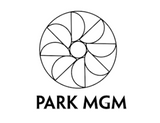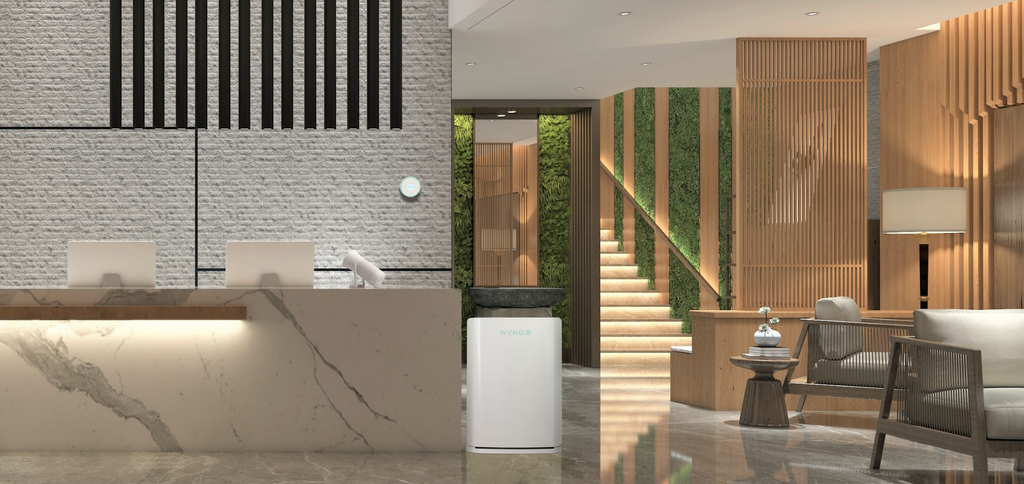According to the Environmental Protection Agency, “Americans, on average, spend approximately 90 percent of their time indoors, where the concentrations of some pollutants are often two to five times higher than typical outdoor concentrations.” Pollutants of concern include particulates (smoke, smog), volatile organic compounds (chemicals), allergens like pet dander and mold, and much more. Ironically, the EPA found those most susceptible to the harmful effects of pollution are those who tend to spend the most time inside.
Poor indoor air quality is a known health hazard. The World Health Organization attributes 4 million premature deaths per year to indoor air pollution, and attributes the spread of COVID-19 to “poorly ventilated and/or crowded indoor settings, where people tend to spend longer periods of time.” Long-term air pollution is also directly associated with the COVID-19 mortality rate.

Despite the threats that poor indoor air quality presents, there is little readily available data consistently measuring the air quality within our indoor environments, and the EPA does not regulate indoor air.
Abstract:
As travel picks up and indoor gatherings resume, albeit with a newfound cautiousness and air quality awareness, Wynd set out to map indoor air quality in one of the most frequently visited destinations in the United States, Las Vegas.
Results:
Using Wynd’s Indoor Air Quality Tracker, researchers crowdsourced tens of thousands of data points to measure and benchmark indoor air quality across 28 hotels on the Vegas strip. Taking measurements within the lobbies or common areas of these facilities, Wynd cross referenced the data with the EPA’s Air Quality Index to compare and benchmark the hotels’ indoor air quality levels on a scale from good to hazardous.
This case study showed that there are significant differences between hotels’ indoor air quality levels, with the worst hotel being 80 times worse than the best one. These differences exist despite the fact that the hotels are within close proximity to one another.
Figure 1 shows the individual measurements of the concentration of PM2.5 (fine dust) for each of 28 major hotels on the Las Vegas strip. The worst air quality hotel has a concentration of ~300 micrograms / cubic meter of PM2.5 (worse than the average air quality day in Beijing or New Delhi), which is more than 80 times worse than the best hotel.

Figure 1: Indoor air quality ranking by major hotel / casino on the Las Vegas strip, as defined by the concentration of PM2.5 (fine dust).
The reason why this study matters is because the level of indoor air quality has a direct effect on both long-term and short-term health, and there can be stark differences between buildings, even in the same area.
Indoor PM2.5 levels have direct correlations to how well the building is taking care of ventilation and filtration, which can dramatically reduce viral spread of COVID. Staying at a hotel with 80x the concentration of fine particles also suggests a similar increase in concentration of other forms of particles, including viruses and aerosols that can spread disease.
Air is invisible, and the subtleties of air quality between different spaces or buildings can be hard to discern with human senses, and difficult to keep track or to compare. However, with low-cost, accurate and distributed sensors, we can start building a picture of which places are healthy and which places need improvement. The implications of this study at scale - across different built environments including hospitality, education, office, and more - can improve health and wellness for society as well as help bring us back from this time when everyone is afraid to be in shared spaces again.
Our data shows that The Aria Resort, Park MGM and Wynn Las Vegas are the top 3 hotels in terms of cleanest air. Their average air quality is just as good as outside air on a non-polluted day (and in fact may be better than outdoor air).
|
Hotel / Cas |
Indoor Air Quality Ranking |
PM2.5 Concentration |
 |
#1 |
3 ug / m3 |
 |
#2 |
4 ug / m3 |
 |
#3 |
6 ug / m3 |
Context:
Wynd’s proprietary sensor measures a wide range of indoor pollutants, with a focus on PM2.5 or Particulate Matter, which the EPA defines as “fine inhalable particles, with diameters that are generally 2.5 micrometers and smaller,” about 30 times smaller than the diameter of a human hair. Studies link inhalation of these fine particles to health risks including heart disease, heart attack, asthma and other respiratory symptoms. High levels of PM2.5 also strongly suggest that other pollutants and germs are also not being appropriately ventilated or filtered out.
The EPA acknowledges two primary solutions. However, the effectiveness of the first – diluting pollutants with ventilation from outdoor air – is often limited by poor outdoor air quality or weather conditions. Therefore, the second option, “portable air cleaners and HVAC or furnace filters and other duct-mounted air cleaners installed in a home’s central HVAC system,” is a logical preventative measure.
Conclusion:
When it comes to invisible health factors like air, knowledge is power. Without proper monitoring and management, a person will only recognize poor air quality after they’ve already been exposed.
Wynd made the results of our study public because we believe the properties with high air quality should be recognized for the work they put into keeping their associates and guests healthy and safe.
For properties with less than ideal air quality, this information pinpoints what needs to be done for improvements. Results show five hotels fell into the moderate level of concern, which the EPA describes as “air quality is acceptable. However, there may be a risk for some guests, particularly those who are unusually sensitive to air pollution.” One establishment fell into the unhealthy range, and another in the very unhealthy range, defined by the EPA as “an increased health risk for everyone.”
Polluted indoor air can be easily remedied with Wynd’s suite of monitoring and purification tools including AI technology that reduces the concentration of aerosols and monitoring to assure customers the space is properly ventilated. Guests and travelers are entitled to view this data to make informed decisions on where to spend their valuable time while traveling to Vegas. Their health and safety depend on it.

We encourage all hotels and public establishments to incorporate both monitoring and purification technology into their buildings as both a value-add and safety measure. This same technology is also available in Wynd’s suite of personal devices, used to measure and clean indoor air within the home.
Finally, the Wynd Air Quality Tracker, which uses the same monitoring technology that was deployed to collect this data, is available for purchase for anyone wishing to consistently monitor indoor or outdoor air quality. The small tool connects to a mobile app for ready-to-read results, so anyone can detect invisible hazards in any environment.

